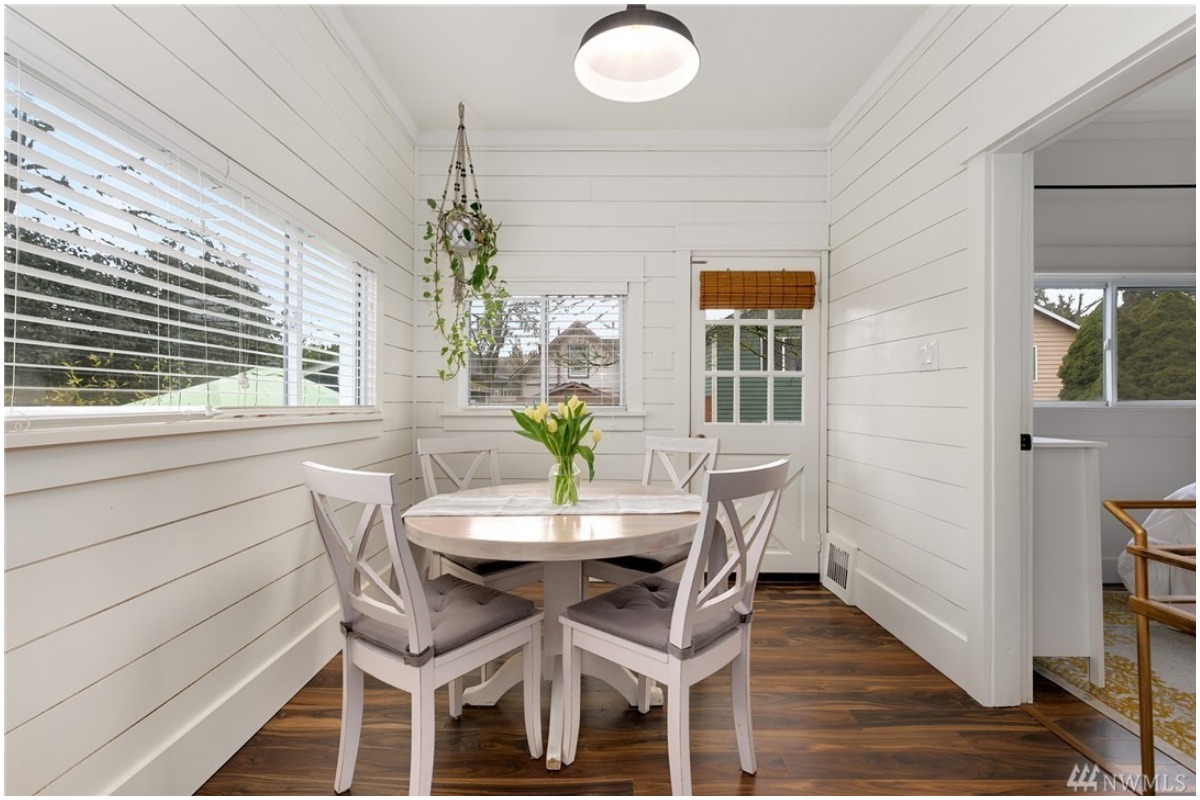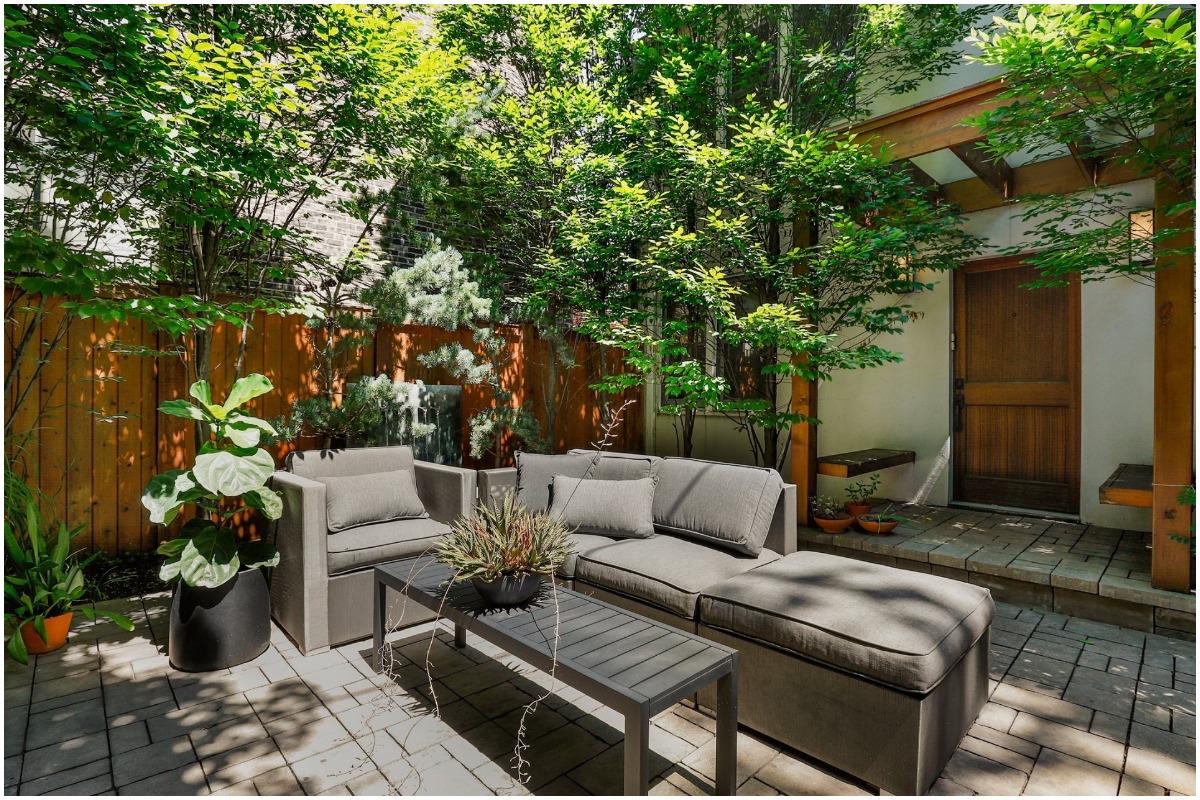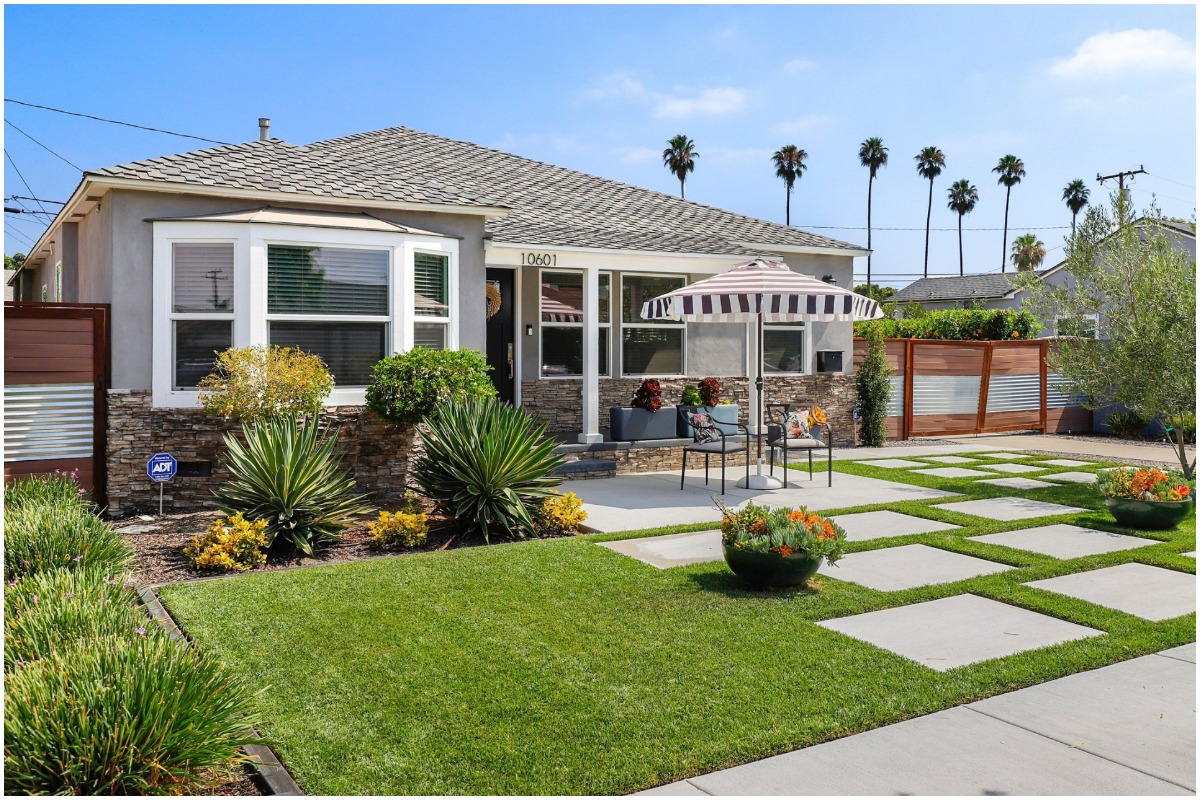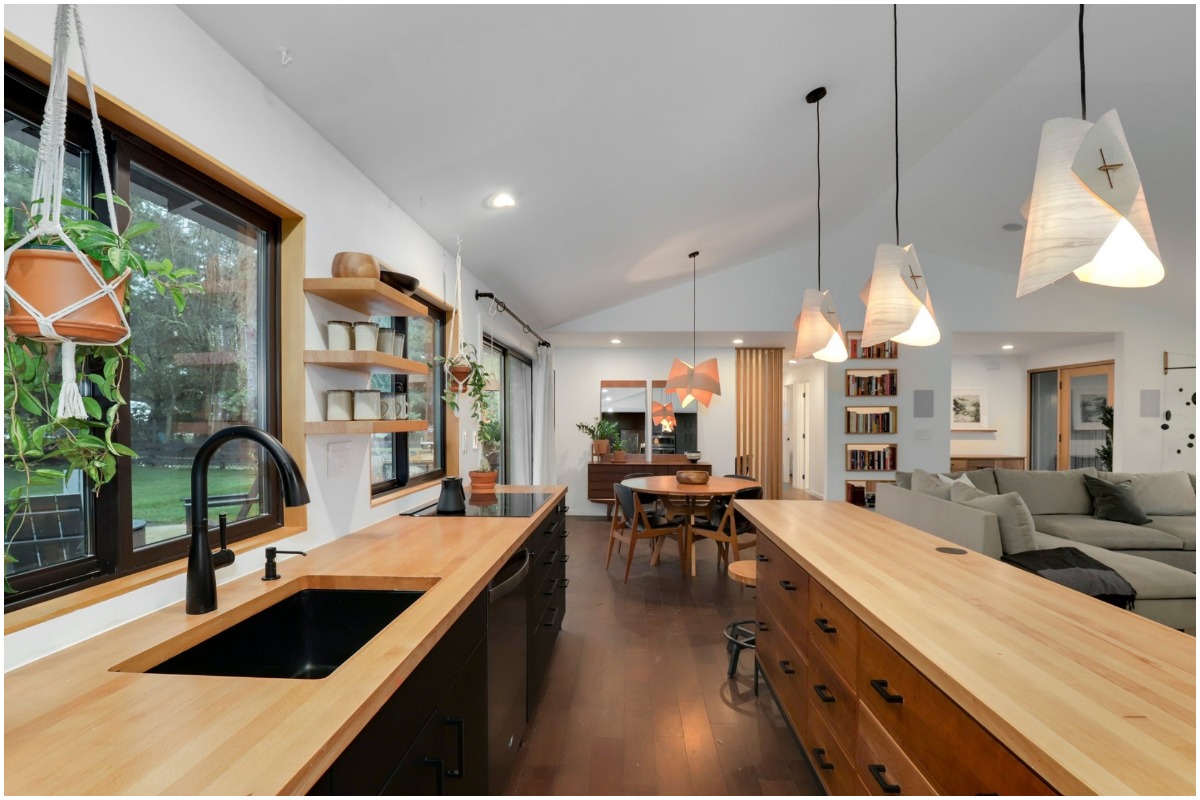If you are tired of living a wasteful lifestyle and are resolved to create a more eco-friendly home this new year, you may be feeling a little overwhelmed or unsure where to start. Rest assured, you’ve already tackled the most difficult step, deciding to make a change.
When it comes to what exactly you can do to start making a difference in your home and ultimately the planet – you have a wide range of options. Some are minor lifestyle adjustments while others are long-term investments that will ultimately save both money and valuable resources. To help you get started, we’ve reached out to a variety of sustainability experts, from those living in Portland, OR to those in Pittsburgh, PA, for their best tips for creating a greener and more eco-friendly home in 2021. Check out what they had to say.

Make use of natural resources at home. Apart from using smart man-made products, making use of natural resources such as sunlight, air, and water, always help attain a green environment. Utilizing natural light and ventilation within your home leads to a healthier and productive lifestyle. – IQS Directory
Reduce food waste at home. Reducing food waste is certainly a systemic issue, but can be simplified in your own home. Make a shopping list before you go to the store and eat what’s in your fridge. Once you’ve used (and re-used your food!), then you simply compost what’s left. – Compost Collective KC
Plant a tree (or several). This is a cost-effective and aesthetically pleasing way to help save on heating and cooling loads, protect your home from high winds, and reduce stormwater runoff. The DOE has a great infographic with tips on how to best approach tree planting and other eco-friendly landscaping design tips HERE. – Build It Green
Make small adjustments to your water use. Did you know that in the United States alone, about 2 trillion gallons of clean water are lost each year due to leaky faucets, poor plumbing, and bad infrastructure? While there’s still much to do in terms of restructuring our country’s entire water system, you can make a huge contribution by making small adjustments within your own home. Repairing leaky faucets, tightening loose pipes, fixing running toilets, and installing water-efficient showerheads will not only plug a hole in our water problem, but it may save you lots in your annual water expenses. – World Water Reserve

Switch to green power. Since many of us are working from home right now, focus on greening your home office by taking a simple action—switch to green power. Check to see if your utility offers a 100% renewable-energy option. For example, for a very small premium, San Francisco residents can enroll in the CleanPowerSF 100% renewable SuperGreen energy option, which provides 100% renewable energy from sources like wind and solar. – Green Impact
Ditch fossil fuels in favor of renewable energy. By default, most homes are powered by fossil fuels, but today there are a ton of options for switching to renewable energy, and the best part is: it doesn’t have to cost you extra, and if it does, it’s so small you won’t even notice the difference on your energy bill. Plus, it only takes a couple of minutes to switch over. You can call your service provider directly to see if they have an in-house option, or you can set it up through a third-party service like Arcadia or Green Mountain Energy. – Mama Eco
Add a deciduous shade tree to your home. One of my top garden design tips for an eco-friendly home is to add diverse plantings into your garden, including, especially, a deciduous shade tree to the south/southwest of your home. That’s because a shade tree will help keep your home cooler in the heat of summer. But, when it is leafless in winter, it will let the low-horizon sunlight of those short, cold days shine through. And we all need some brightness and extra vitamin-D in winter. – Garden Mentors
Understand the environmental cost of the objects in your home. Go back to following the American saying of “Use it up, wear it down, make it do or do without” in such a way that we use our ingenuity, creativity, and resourcefulness to make our homes beautiful and eco-friendly without increasing our carbon footprint. By understanding the intrinsic value of objects and the environmental cost of making them, we suddenly feel urged to respect them and to lengthen their life. – Simple and Subversive
Think before you buy. Consider if you will use the item 30+ times and if you could use something else in your home to fulfill the purpose. Don’t buy an item until you have thought about it for at least a month before purchasing. – Ethically Kate
Practice eco-friendly cooking. Cover your pans while cooking and save around 3% of energy per pan. Chop food into smaller pieces so they cook quicker, using less energy. Allow your food to cool before putting it in the fridge so your fridge doesn’t have to work as hard. – The Friendly Turtle

Try a backyard composting system. This allows homeowners to take unwanted materials like food scraps and yard waste and turn it into beneficial compost to add organic matter, water holding capacity, and plant friendly nutrients to a home’s soil. The simple recipe for good backyard compost is 3 parts brown materials (leaves, pine needles, wood chips, etc.) with 1 part green materials (food scraps, grass clippings, green plants, etc.) mixed into a big pile at least 1 cubic yard in volume with some water. A “3 pile compost system” can be built at a very low cost to create a continuous flow of environmentally-friendly compost to help your yard and garden be happy and healthy. – Full Circle Soils & Compost
Unplug appliances and chargers. Easy fixes and habits that can help your energy budget are unplugging chargers for your phone/toothbrush/drill charger, (anything with a black box transformer continues to draw energy when plugged in), or easily reached small kitchen appliances. Also, over a period of time, small surges from large appliances like refrigerators or air conditioners can gradually wear down other appliances on the same circuit, shortening their lifespans, so unplugging can be a sustainable factor for your beloved toaster and hairdryer. – Greening Detroit
Reduce before you produce. Some ways to reduce energy consumption are installing a smart thermostat and LED light bulbs, making sure your ducts and vents don’t have holes, and that your attic has enough insulation. Do these things and you’ll have a sustainable and eco-friendly home. Also, Congress extended the 26% Solar Tax Credit until 2022. – Nerd Power
Re-design to reduce waste. Homes these days commonly have bins for trash & recycling; add a third for food & other organic waste, and cut down your trash by 25-50%, while preventing the greenhouse gases generated by food sent to landfills. Compost containers these days come in many stylish looks, and food scraps can also be stored in the freezer if you prefer to keep them out of sight. An added bonus – separating out food waste also means your trash won’t stink. – Compost Crew
If you haven’t already, make the switch to cloth napkins. It’s an easy upgrade that makes every meal feel a bit more elevated – plus, it’s a great way to bring in an extra pop of style to your dining room. I personally love shops on Etsy that feature local, handmade artists like Bright Beige Studio (my kitchen and dining room are full of her amazing napkins and towels.). – Brynna Osh
Be intentional about what you allow to enter your doors. Whatever you allow inside your home has implications on how you and your family live daily life, so make sure that the products that you purchase reinforce your commitment to sustainability. Every choice adds up to create the quality of life you desire. – Hello Lovely Living
Use ethical multi-functional products. Creating a green home without sacrificing style is effortless and fun. We recommend shopping for ethical multi-functional products that have more than one intended purpose to help reduce our carbon footprint and contribute to improving our physical and emotional well-being. – Kriya Veda
Incorporate internal thermal mass walls when designing and building a home. Rammed Earth is our preferred high thermal mass medium, it is unique and works with all home styles. When combined with solar passive design principles, internal thermal mass walls can create major reductions in your energy consumption – reducing your greenhouse gas emissions, enabling savings on your energy bills for the entire life of your home, and creating a comfortable living environment all year round. – Eco Sustainable Homes
Capture the water coming out of your home’s ductless (or mini-split) air conditioner. Direct the air conditioner’s drain tube into a rain barrel for use in the garden later, or have it flow directly into a nearby planter. It’s an automatic watering system that delivers more water when it’s hot and your air conditioner runs more, and less when it’s cool. – The Fabulous Garden

Shop with businesses that offer carbon-neutral shipping. If you’re like most people, you’re shopping online more than ever these days, and goods from around the world are being shipped to your doorstep with greater frequency. By shopping with businesses that offer carbon neutral shipping, and ship their goods in recyclable or compostable packaging – you’ll not only improve your environmental footprint, but you’ll be supporting businesses doing the same. – Sendle
Make your own vegetable stock. Reduce food waste and never buy vegetable stock again by collecting your scraps in a freezer bag until you have a few cups to a full bag’s worth of clean skins, stems, peels, and small pieces that you may typically discard. You can use most veggies but avoid cabbage, broccoli, cauliflower, and brussels sprouts as they turn your stock flavor bitter. Dump the bag into the pot and fill ¾ of the pot with water. Bring water to a boil then simmer for 30-minutes. Strain and store in the refrigerator for up to four days or freeze for up to three months. – Healthy Oceans Coalition
Organize a waste audit with your family. As a start, challenge your household or workplace to see how long you can go without “taking out the trash”, including your recycling bins. When the time comes, before “throwing it away,” organize your own waste audit together with your family. This way you can truly evaluate what you are bringing into your home or workplace and collectively decide which producers you are no longer willing to support. Then you can make a conscious decision to find zero waste producers to support instead.- Happy Stan’s Recycling (HSR)
Go solar. One of the most economical home investments you can make happens to be one of the most environmentally friendly, too. Purchasing a solar system for your home can offset the cost of your electric bills, contribute to a cleaner environment, and increase the overall value of your home. With all-time low prices and great incentives available, it’s a perfect time to consider going solar. – ACE Solar
Use greener home services. An eco-friendly home is about more than energy-efficient features. The services you use make a difference. When researching home services, consider green house cleaners, green haulers, green pest removal companies, and landscapers specializing in drought-resistant design. By choosing greener resources, we reduce exposure to conventional materials that have been known to cause cancer, infertility, and preterm birth. – Zip Code East Bay
Watch the rain. I know it sounds trite, but studying the rain and how it interacts with your property can uncover drainage issues, as well as spark ideas for creative ways to capture and reuse this free water source. – Rain Brothers
Collect storm water with rain gardens and rain barrels. You can do this through the use of rain gardens and rain barrels, to prevent the damage storm water can cause when it enters the sewer system. Rain barrels connect to your downspouts and collect rainwater that you can use to water your plants. Rain gardens use native perennials that can both add curb appeal and provide food and shelter for wildlife. – Nine Mile Run
Use collected rainwater for your garden. By collecting this rainwater it can be used for things such as watering your lawn or garden or maybe even washing your car. A rain barrel can save most homeowners about 1300 gallons of water during the peak summer months. – Ashland Soil and Water Conservation District
Instill energy-saving habits into your home office. Despite shutting down or switching a device to standby mode, items like your TV, computer, and printer can suck significant power on the sly; costing you money, wasting electricity, and increasing your carbon footprint. A simple solution would be to unplug devices at the end of every day. A productive solution is introducing a smart power strip in replacement. Power strips work to reduce your power usage, shutting off power to devices in standby mode. – Focus Booster
Skip the store and “shop” your house for unique drawer organizers. Use your creativity – Grandma’s old teacups can hold thumbtacks and paperclips to beautify a home office desk drawer. Clear glass canning jars can stylishly store Q-tips in the drawer next to your sink. – Eco Happy Style
Originally published by Redfin
GreenPoint Rated is a credible and accessible pathway to prove homes are built to trusted environmental standards.
[email protected]
Mon – Fri, 9am-5pm